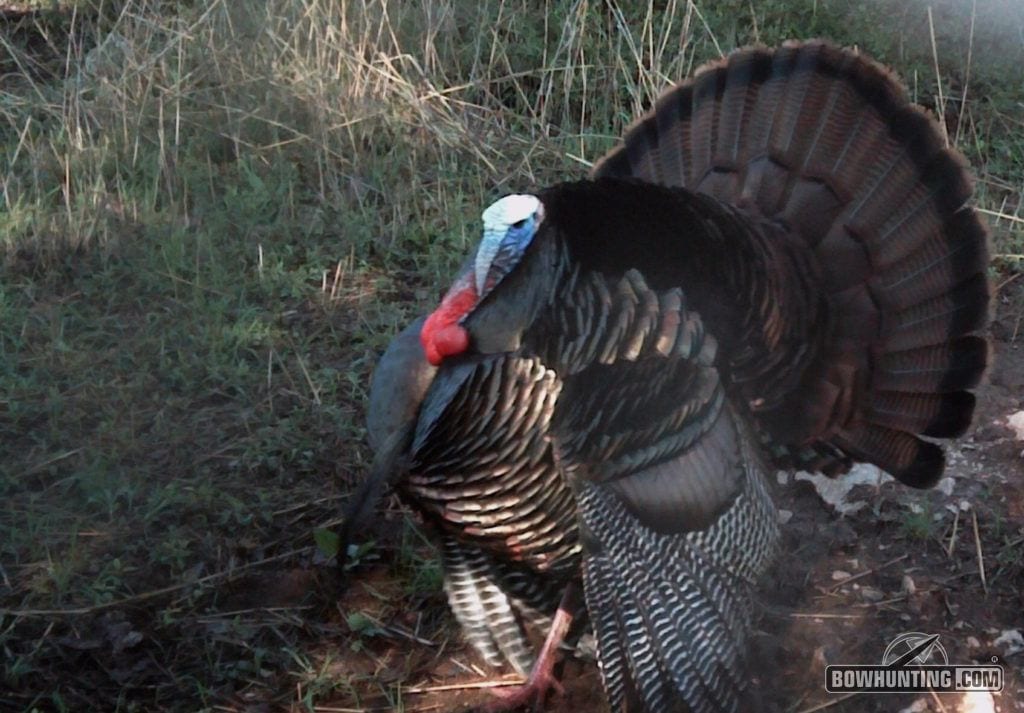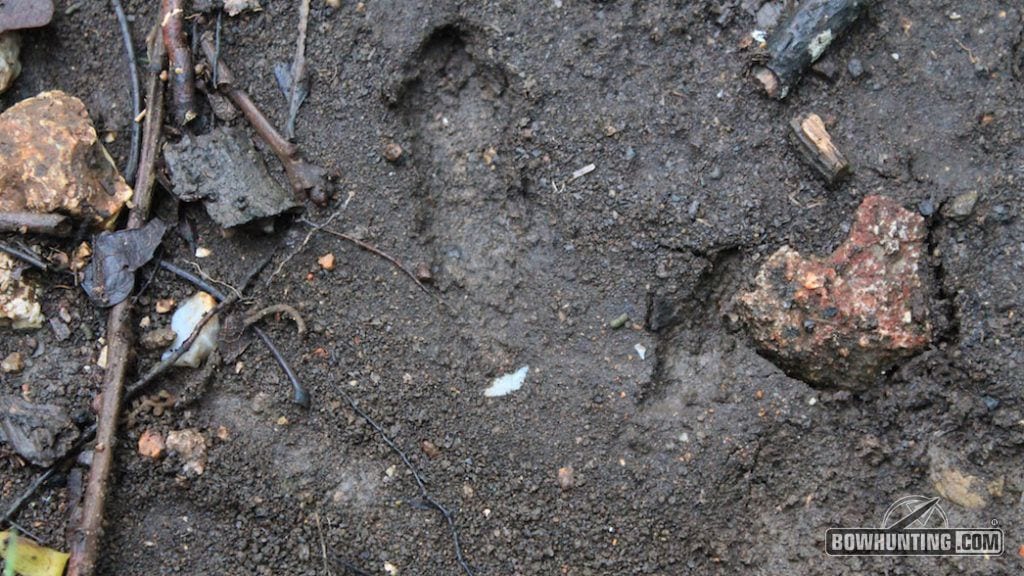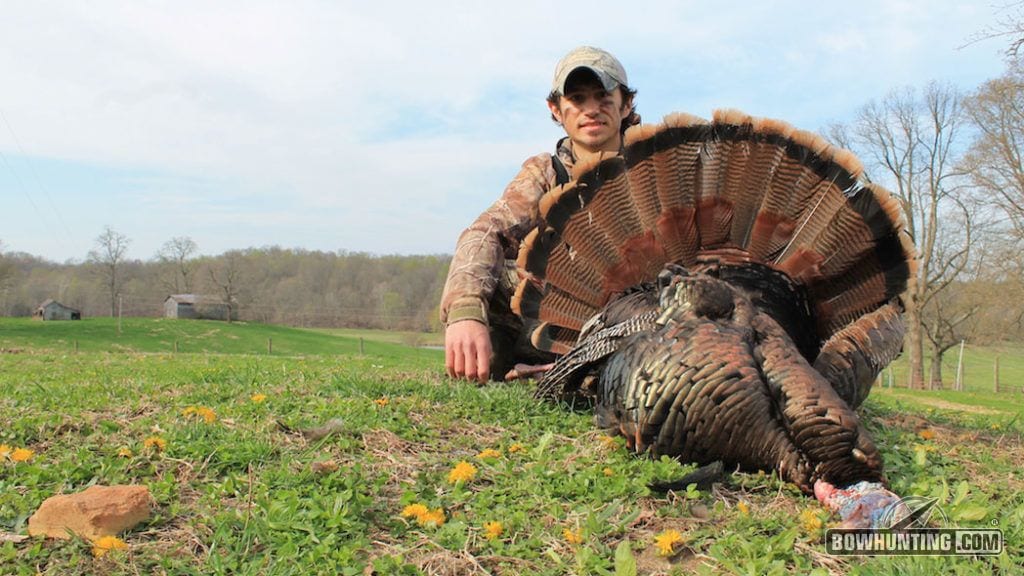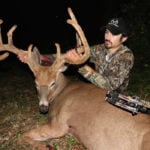For me, turkey hunting takes a backseat to one other game animal: whitetails. But you can bet if it’s spring, I’m chasing turkeys somewhere. It’s one of the best pastimes around. Over the years, I’ve learned knowing what turkeys do before they do it is a huge benefit. Patterning gobblers plays a big role in achieving that. Here are five things to keep in mind when attempting to pattern spring gobblers.

Do your homework before the season begins and a strutting gobbler just might be in your lap on opening day.
1) READ THE TERRAIN
Like with all other big game, most times turkey hunting success is dictated by the terrain and landscape. That’s why it is crucial that hunters read the terrain and anticipate what gobblers will do before they do it.
Turkeys are predictable creatures. We know turkeys like benches on hillsides. They like ridge tops. A lush green meadow in the middle of the timber is a sure-fire hotspot. The list goes on. The point: Turkeys love certain types of terrain.
A hunter will greatly increase their odds of success by looking for these types of terrain and anticipating that turkeys will use them. The upside of recognizing these type places is you can see them, setup near them, and wait for turkeys to come before they even get there.
Knowing what type terrain turkeys prefer will also help you know where to scout prior to the hunt. And, as we all know, scouting is crucial for success.
2) LOOK FOR CONSISTENT SIGN
Turkeys often do the same thing day in and day out. It might not be the exact same way, but it will be pretty close unless hunters, predators, or weather alters their behavior. Because of that, turkey sign starts to accumulate in places where turkeys frequently inhabit.
I look for several different types of turkey sign when scouting before the hunt. The first is turkey droppings. Heavy concentrations of droppings in fields and along tree lines shows where turkeys are feeding and traveling. Turkey tracks are another obvious indicator of travel routes. Important note: Gobbler tracks are distinguishable from hen tracks. The middle toe on a gobbler is significantly longer than the two outside toes. A hen’s toes are all about the same length. This is reflected in the tracks they leave behind.

Consistently finding turkey tracks on the property you hunt is a good sign of where you need to be come opening day.
The next two things I look for (together) are turkey droppings and wing feathers. Find quite a bit of these two things together in the timber (or along tree lines), and you’ve located a roost site. Remember it.
There are also subtle signs to look for. One is strut marks. When a turkey struts, their wing feathers drag across the ground. This leaves two parallel lines in the dirt approximately 12 inches apart. There will probably be turkey tracks between the two lines.
3) USE TRAIL CAMERAS FOR TURKEYS
Everyone thinks trail cameras are just for deer. Very few of my turkey hunting buddies use trail cameras for turkeys, but all of them do for whitetails. They’re missing the boat. And you are too if you aren’t using your perfectly good trail cameras to scout for turkeys.
It’s actually not much different than using them for deer. Scout for turkeys. Look for places you know turkeys are using. Look for places you think they might be spending time in. Post the camera. It’s that simple. But remember, turkeys are shorter than deer. Post cameras about one foot off the ground for best results.
4) DO IT THE OLD-FASHIONED WAY
Technology has come a long way in the last 20 years. But that doesn’t mean you can’t do things the old-fashioned way. Matter of fact, that’s my favorite way to do things. Call me an old soul, if you will.
So, by old-fashioned, I mean putting in the legwork and miles it takes to scout turkeys on foot. Grab your binoculars, spotting scope, water bottle, and backpack full of other essentials, and hit the woods for the day. Personally, I like going out each morning (on days that I can) at first light. I listen to see where toms are gobbling. I put a dot on the map for every roosted bird I hear each day. Make sure the dot is placed where you know or think that bird is. Do that for several weeks leading up to the season, and you’ll start to see a pattern.
Put in the necessary miles it takes to find and pattern big longbeards before the season ever opens. Pull your boots on, get out there, and find those darn turkeys. You’ll be glad you did come opening day.

The author with a well-patterned gobbler.
5) PATTERN THE HENS INSTEAD
Let’s face it. It’s the hens that often dictate success or failure in the spring turkey woods. It’s just that simple. So sometimes it isn’t about patterning the gobblers at all. It’s about patterning the hens.
How do you pattern the hens? Just like you pattern the toms. Use the same game plan for both while scouting and patterning turkeys during the pre-season.
It’s getting closer to game time. Are you ready?

 By
By 



